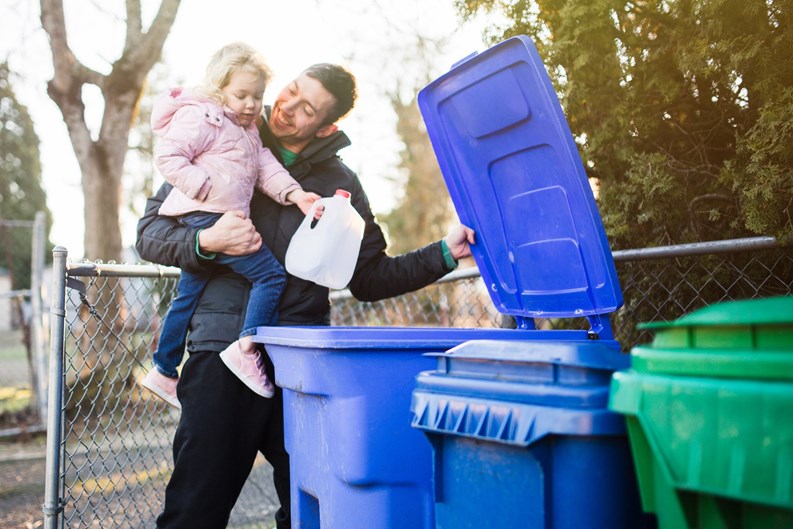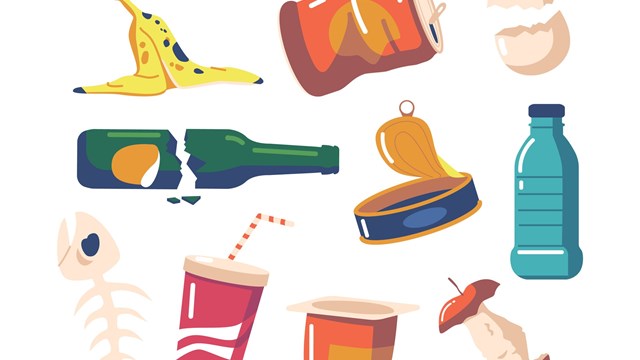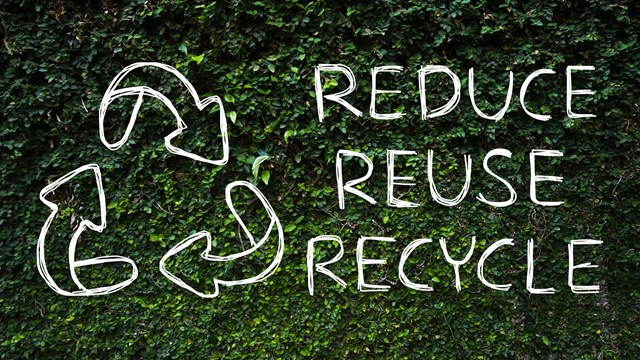One would be hard-pressed in 2017 to find a person who would argue that recycling is a bad thing. Even with portions of the population questioning the reality of climate change, recycling paper, metal, and glass is an action of almost universally-acknowledged virtue at this point. But regardless of one's politics or personal habits, recycling in New York City is mandatory. The Department of Sanitation requires residential owners and landlords to designate a specific and accessible area for recyclables, post explainers with necessary information, and ensure that residents are aware of what is required.
That said, people are people, and corners do get cut. Should anyone peruse through any trash can or garbage bin (not a recommendation), they're likely to find the errant can, glass bottle, cardboard box, etc. The city can only be so vigilant when it comes to policing an entire city's recycling habits. Thus, in condos and co-ops, it falls to the board and fellow residents to encourage each other to consider Mother Earth and put waste where it belongs.
Fortunately, this has only gotten easier, thanks to city programs and technologies that promote simple and straightforward sorting.
Trash
In many a condo or co-op property, each floor has a garbage room with a trash chute and various bins into which residents are expected to sort their recycling. While this is not overly complicated to begin with, it can still be made simpler.
Tower Recycling Systems, a company based in Egg Harbor Township, New Jersey, provides technology to high-rises in the tri-state area that offers the garbage chute – once exclusively used for waste disposal – an all-purpose upgrade.
“Instead of storing recycling on the floor, and dirtying things even further, a resident pushes a button on the chute to express whether they're depositing trash or recycling,” explains Michael Importico, Jr., the company president. “This unlocks the chute door, at which point everyone else is locked out [of the chute] until that material reaches the basement, where we have what are called 'diverter plates,' which will separate the material into the appropriate pail. At this point, the chute unlocks for further use.”
In New York City, where recycling guidelines are strictly enforced, Importico offers a method by which buildings and residents can monitor and track their separation of waste versus reusables. “We provide a fob, as one might for a door or elevator, that you use when you deposit garbage or recycling,” Importico says. “It will indicate that, for example, Apt. 23 hit recycling 30 times that month versus 10 trash deposits. This way, if the city comes in and claims that you're not doing your fair share, you have records that show that you are. And if you're falling behind, the building will be aware and can urge residents to pay more attention to their recycling.”
Large electronic appliances that cannot really fit in a bin or down a chute still must be disposed of properly, says Jay Cohen, director of operations at A. Michael Tyler Realty Corp., a New York property management company. “We have special electronic recycling areas,” he says. “These items are not biodegradable, and would only serve to take up immense space in landfills if thrown away.”
The Department of Sanitation also provides myriad resources for boards or property managers looking to up their recycling games. For one, they can receive a site visit from the department to ensure that everything is on the level by filling out information here. And guidelines as to important things that management need be doing to inform and encourage residents are listed at the bottom of this page.
Compost
Recycling may start with the containers of various products and foodstuffs, but it need not stop there. Food waste, long cast away as refuse, can in and of itself be recycled, as the city has increasingly embraced and encouraged composting.
“I have many buildings that have set up compost stations,” notes Cohen. “And we reuse that compost in our gardens.”
For those unsure how to begin, the city once again has its green foot forward. The Department of Sanitation currently provides curbside service for many residents in all five boroughs, and, by the end of 2018, will provide that or convenient neighborhood drop-off city-wide. This initiative is extremely prudent as, according to the department, organic waste accounts for about 31 percent of all waste generated by the denizens of this fair town.
Those looking to explore composting further can look here.
Wear, Then Share
Last but not least is something everybody needs but may not necessarily consider recyclable: clothing.
According to the Department of Sanitation, New Yorkers scrap around 200,000 tons of various fabrics, leathers, textiles and what-have-you each year. Through a partnership with the sanitation department and Housing Works, the refashionNYC program aims to combat this by offering in-building clothing donation options. Boards and managers of buildings with more than 10 units can enroll here and the Department of Sanitation will visit the property, discuss size, number and placement of bins, and then arrange a delivery. Once the bins are filled, boards can request a pick-up, and voila! Unworn garments are immediately rendered a charitable donation.
Mike Odenthal is a staff writer at The Cooperator.







Leave a Comment